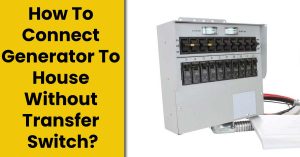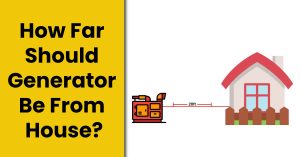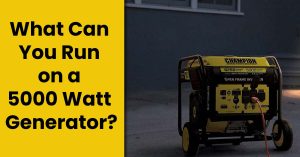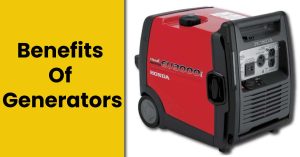How to Fix Generator Power Surge Problem? – 4 STEPS
We have explained the signs and reasons for generator surging, and How to Fix the Generator Power Surge problem using DIY methods.
A power surge is a sudden and very quick spike voltage higher than the level that typically flows through the outlets. This sudden spike can destroy or damage any electronic that it travels through. A generator that has a surge problem will display fluctuations in power in regular intervals. These intervals will follow a clear pattern or can be random.
When you go to turn ON your generator, and as soon as your turn OFF the choke, the generator will start idling up and down (you will know it when you see it).
What Are The Signs Of Surging In A Generator?
- Lights getting too bright and dimmer. Back and forth flickering.
- Huge vibrations in the generator.
- Generating getting noisy in intervals.
- Increasing and decreasing of the RPM.
There could be multiple reasons your generator is surging, and some of the common ones are:
Why My Generator Is Surging?
- Old Generator
- Poor Fuel Quality
- Partial or fully damaged components
- Poor Maintenance
- Extra Load
- Erratic Motor
1. Old Generator:
Nothing lasts forever. Old generators have this surging problem. Normal wear and tear, and internal friction come with age. If your generator is old and you notice surges, consider replacing it.
2. Poor Fuel Quality:
Surging caused by poor fuel quality, low fuel, or incorrect fuel is a common issue. Most generators have specific fuel requirements like non-ethanol fuels. Your generator may cause surges if you use incorrect fuel because it will not be burned completely and correctly.
Clogged air filters and carburetors can also cause sudden spikes in voltage because the engine will not receive proper airflow, or proper fuel to burn the fuel completely.
In most cases, the generator won’t even start due to a clogged carburetor or air filter.
3. Partially Or Fully Damaged Components:
Damaged components can cause surging. A partially or fully damaged capacitor prevents the generator and correctly distributing the power. A damaged capacitor leads to very wild fluctuations in voltage.
If you are experiencing rapid and wild fluctuations, then check the capacitor.
Non-functioning or partial AVR failure could be the reason. An AVR (automatic voltage regulator) is a device that maintains a regular and constant voltage to electrical appliances on the same load.
This AVR sits on the alternator and monitors the power output of your generator. It smooths out the constant power output of the generator.
Any small issue with the AVR can cause massive power surges because it will lose power control.
4. Poor Maintenance:
Like other mechanical and electrical equipment, generators also need regular maintenance to keep operating at peak conditions.
Neglecting maintenance like changing the oil on time, tuning and washing the generator, fuel pipe, spark plug, and carburetor maintenance can lead to more wear and tear.
This wear and tear lead to power surges. Last year, I didn’t maintain my traditional non-inverter generator for about 8 months and I was noticing wild surges.
The poor maintenance led to capacitor failure and clogging in fuel jets. I fixed both problems on my own, and the surges stopped.
5. Extra Load:
Suppose you have a 2000 peak watts, and an 1800 running watts generator. If you are exceeding the load than the original capacity, then there will be sudden voltage spikes.
Never overload your generator. It does not cause surging, but overheating as well which leads to malfunctioning.
Be extra careful with motor-driven appliances because they need extra power (starting watts) to overcome inertia. Later these appliances to their original capacity. The fridge is a great example. It needs 800 to 1000 watts to start, but it only consumes about 200 watts to run continuously after it starts.
6. Erratic Motor:
Old erratic motors and variable batteries generally cause surges in the generator. Old motor-driven machinery without a governor causes fluctuation in the draw, causing erratic voltage surges in the power that can damage sensitive appliances.
How to Fix Generator Power Surge Problem?
Fix your generator’s power surge problem in 4 simple steps.
- Replace or repair faulty equipment
- Never overload your generator
- Debris in the fuel system
- Clean the carburetor and Air-filter
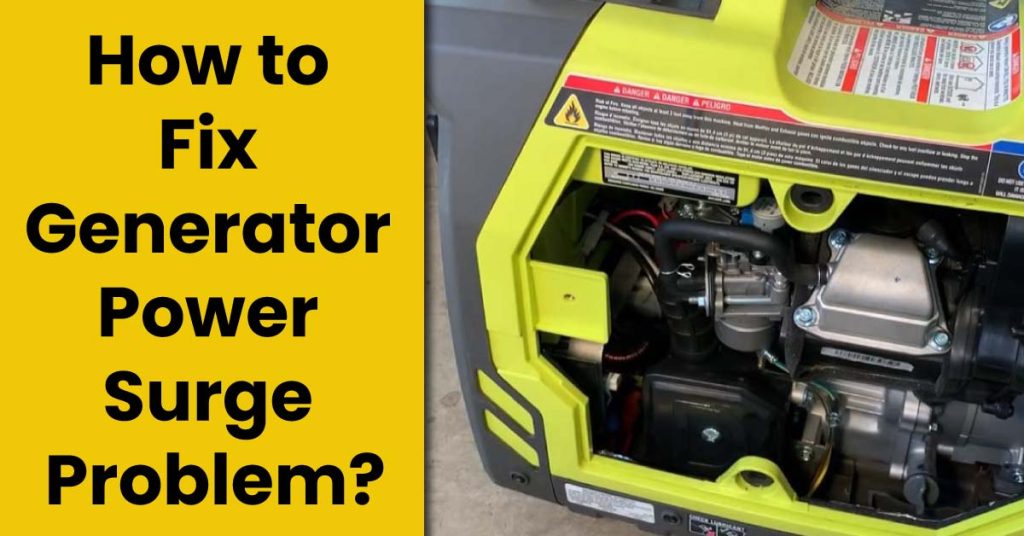
1. Replace or repair faulty equipment
Old damaged components like capacitors or AVR should be replaced to get rid of the generator surging problem. I repair and replace all the generator equipment myself because I am a professional. If you don’t know what you are doing, then call a professional. Done mess with electricity.
If you want a guide to repairing a generator make sure to have a look.
2. Never overload your generator
Overload causes internal malfunction, power surges, and overheating. Never overload your generator, especially with motor-driven appliances. Only connect the calculated load.
We also have a guide to fix an overloaded generator make sure to have a look.
3. Debris in the fuel system
- Locate the jet behind the side panel under the throttle stop screw. You would need to remove the throttle stop screw that sits on the top of the low-speed jet.
- Count and note the turns it takes to loosen up because we would need to screw it back to the factory setting.
- My champion 4000-watt generator takes 6 complete turns.

- Slightly grab onto the jet and slightly slide it straight up.
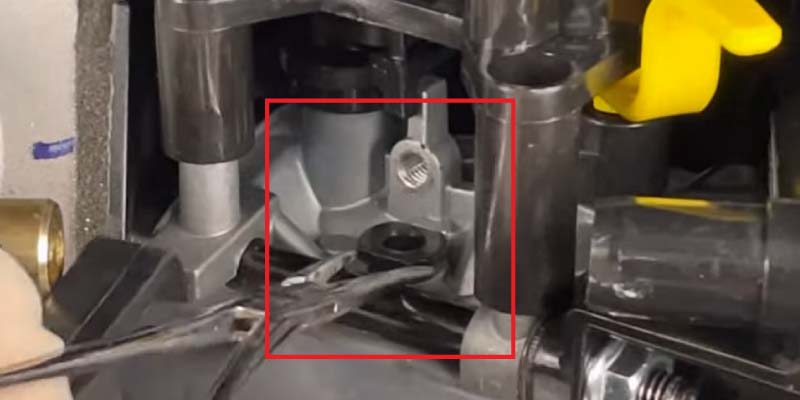
- The jet hole is very small, the slightest little piece of debris can block the hole.
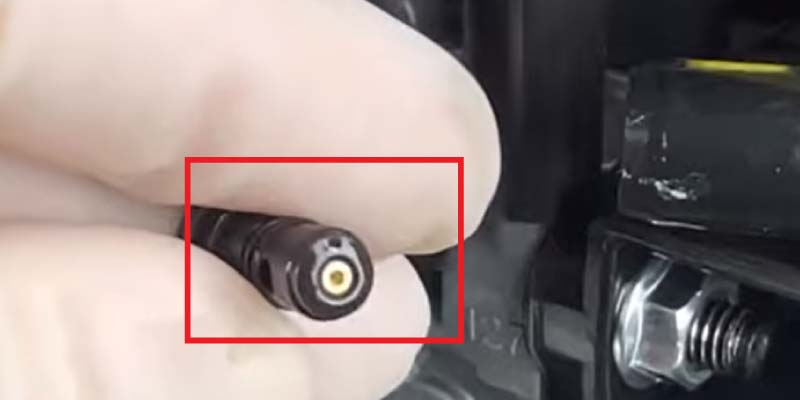
- Use 1 thread of copper wire (not the entire wire, just one thread), and push it down the hole. Be very gentle. Don’t use the compressor because it is very fragile, you may end up damaging the O-rings.
- Put everything back together. The generator will run fine now.
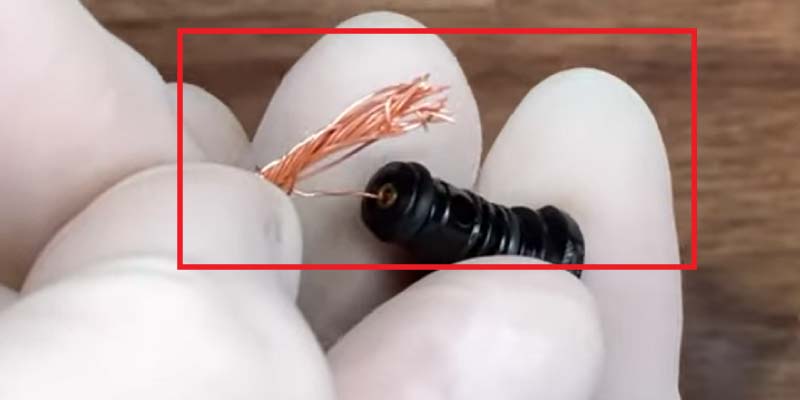
4. Clean the carburetor and Air-filter
Sometimes dust and debris clog the air filter and block the airflow. The engine doesn’t receive enough fresh air for proper combustion. That may also cause fluctuations in the running.
Old gasoline forms a clog in the carburetor, making it difficult for the fresh fuel to get through. The engine doesn’t receive enough fuel for complete combustion which may lead to the generator surging.
Clean the main jet and drain the carburetor if you haven’t used your generator for some time.
Here is a detailed guide for cleaning the carburetor of the generator safely
Frequently Asked Questions
What is Generator Hunting?
Sudden changes or fluctuations in the generator speed or power supply after certain intervals or randomly is called generator hunting.
What is a surge arrestor in a generator?
Surge arrestors or protectors are a device is used to limit the amplitude of impulsive waves and protect the generator insulation. Basically, it protects the generator from overload.
In other words, it limits the voltage on the generator by discharging or bypassing the surge current.

Alex Black is a seasoned electrical engineer with a remarkable 8-year track record specializing in appliances, generators, and transfer switches. With extensive hands-on experience in the field, Alex possesses a deep understanding of electrical systems and their intricate workings. Throughout their career, Alex has consistently demonstrated expertise in designing, troubleshooting, and maintaining various electrical appliances.

